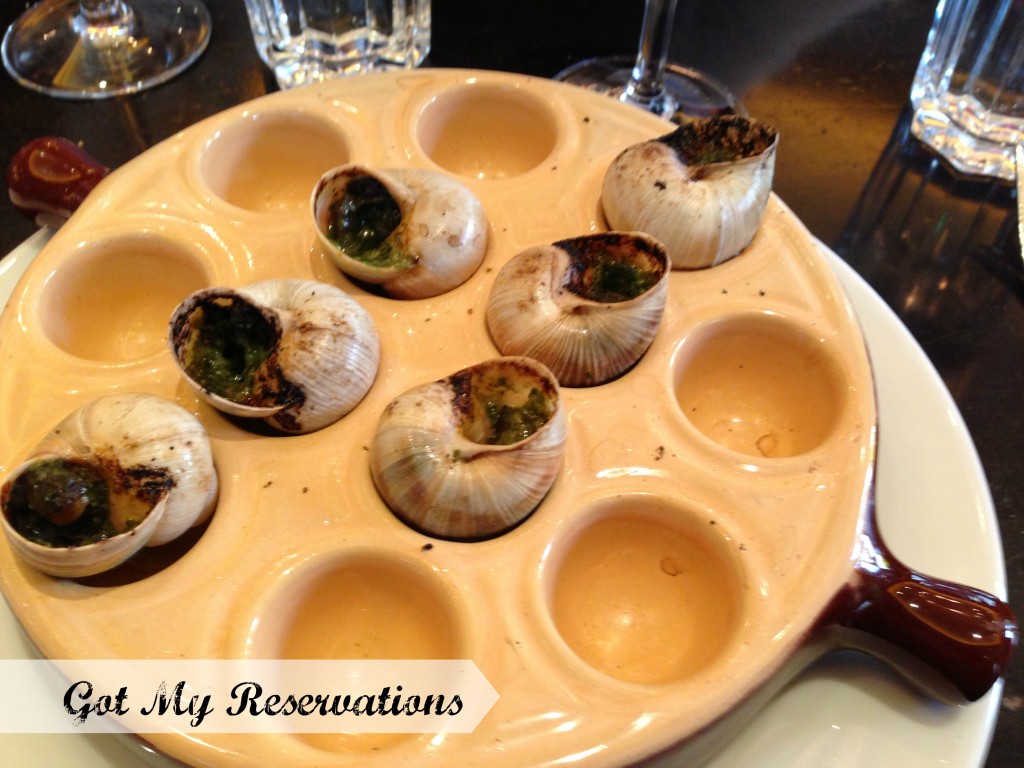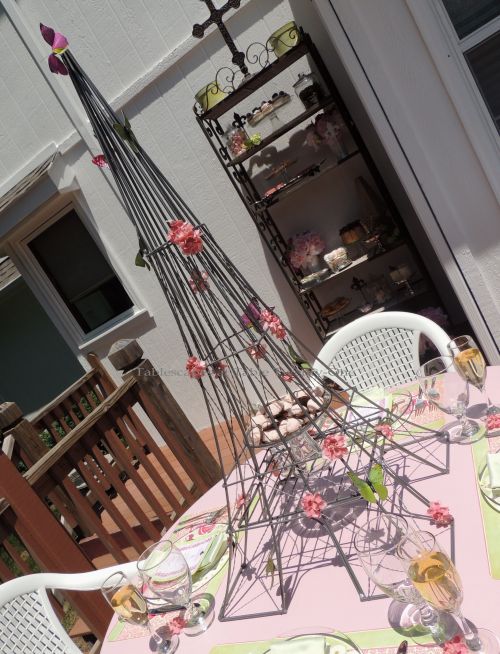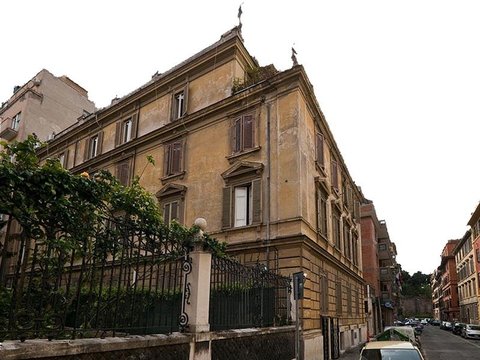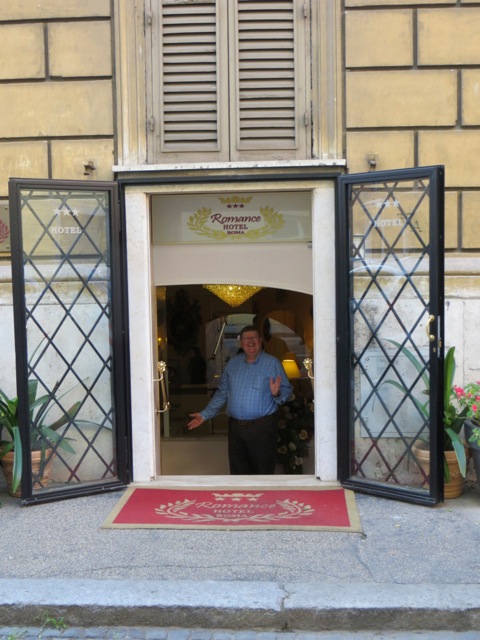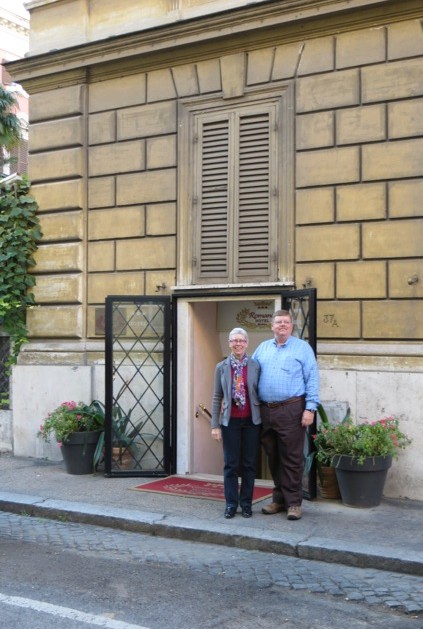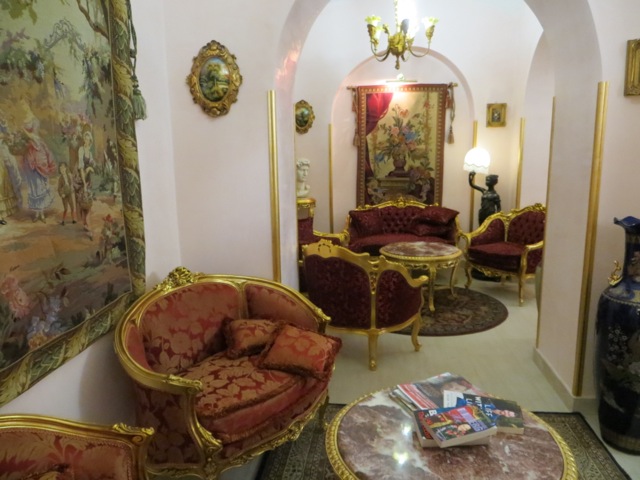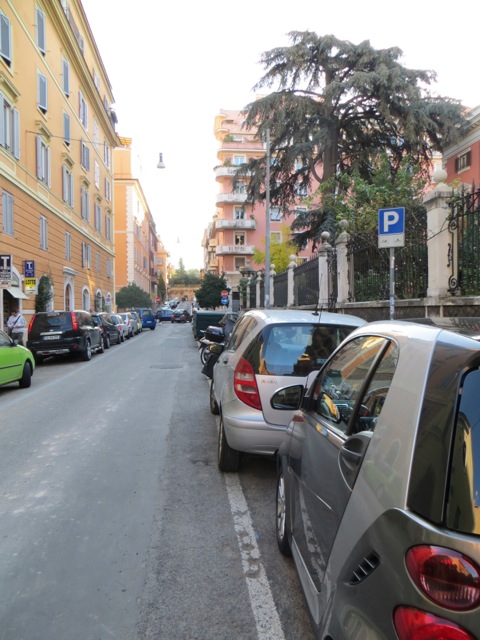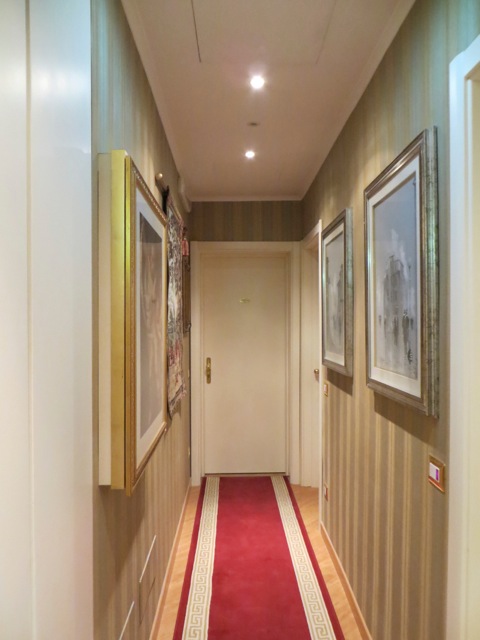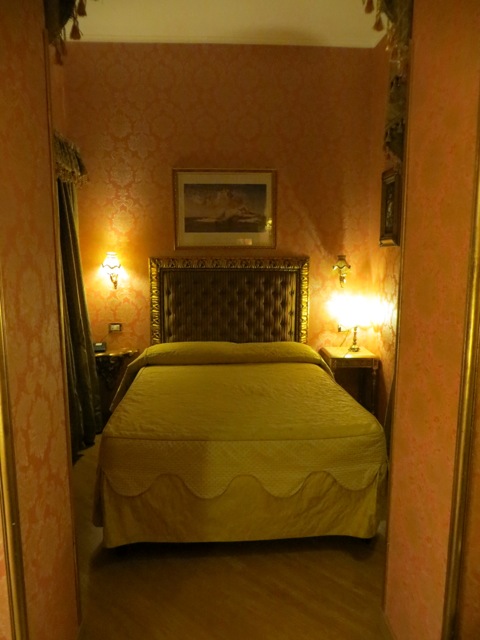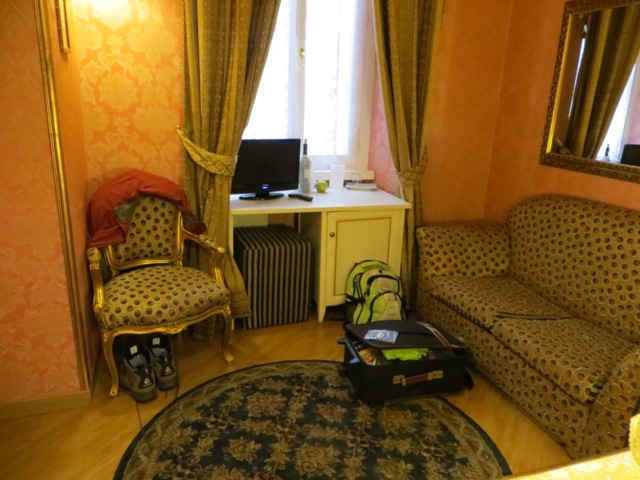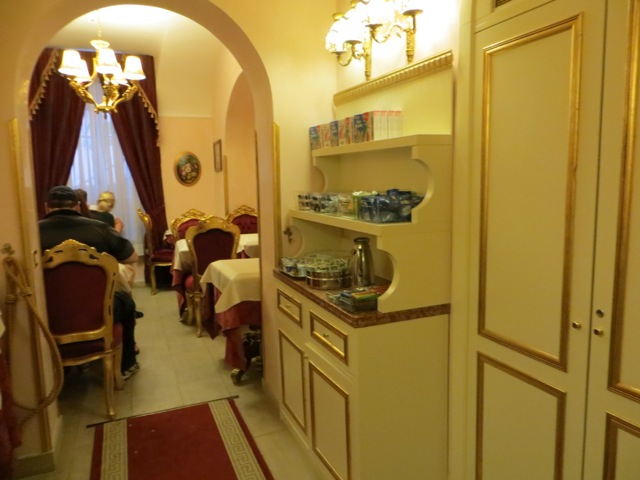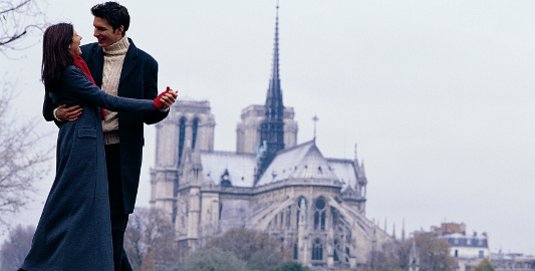Category Archives: Travel Diary
Alycia Nichols, You Made My Day
I said it. I said “Uncle.”
I have spent my day in a funk after visiting my orthopedist and coming to a decision about my arthritic knee. He told me that I have to say “uncle” before he’ll consider doing knee replacement.
I’ve been suffering from what I call marching band knees for many years — my knees are shot from too many years of abuse and too many years of being overweight. I had arthroscopic knee surgery in 2002 and my doctor told me I’d be begging him for a knee replacement in five years. Well, it’s been eleven years, and I have been determined not to wimp out. Everyone said that it would become clear — that I would know when it was time for a knee replacement.
Sometimes life’s lemons are sweetened with sugar.
I still don’t know about the knee replacement, but I do know that I was in a bad place today. And then along came this wonderful post from my friend, Alycia Nichols of Tablescapes at Table Twenty- One.
In February, when we were putting the final touches on our April 2013 trip to France, I posted about these cute placements I saw online. Then I dragged my traveling companions all over Paris trying to find these pink and green ones because my blogging buddy Alycia liked them. For those of you who don’t know Alycia, she is the kindest commenter out there in the blogging universe, and I wanted to thank her for her generosity with her time for other bloggers.
What she created with a silly quartet of plastic placements is truly amazing and I am thankful once again for her thoughtfulness. Sometimes people outside of the blogging community don’t understand the sense of community and friendship that develops in the blog world among people who may never meet each other in person, and my friendship with Alycia is one of those connections that surpasses reason.
So, if a knee replacement will get me back to Paris, and London, and Rome, and Venice, and Florence, and Berlin, and Prague, and Istanbul, I’d better buck up and do it. My travel bucket list goes on and on… and Alycia and I need more stuff for our tablescaping stashes!
Please visit Alycia’s beautiful tribute to Paris. You won’t be disappointed.
The Sunday Review: Getting Up to Speed on the Tudor Court
After Friday’s Travel Diary post, I’ve had several requests for the quintessential book about the Tudor Court. Clearly, I cannot name just one. Impossible. I can, however, give you a glimpse into a reader’s history and how I developed a passion for Anne Boleyn’s story.

Yes, that’s me inserted into the Queen Elizabeth I painting. My son gave me this for my birthday last year!
I came into my obsession through a couple of different avenues, but we’ll start with my childhood reading. As a precocious reader, my parents let me run amok in my hometown library, and I devoured everything I could find about the Tudor Court. I was fascinated with how a man, even if he was a king, could somehow get away with having six wives and killing two of them — remember the old saying, Divorced Beheaded Died Divorced Beheaded Lived? I was entranced with how Elizabeth I got to the throne and at some point, I figured out why the current Queen of England was Elizabeth II. I was hooked.
When I began to teach American history, I realized that my students had no idea why the early English colonists left to start over in what they called the New World. The idea of religious freedom had little meaning if not compared to the religious situation the colonists left. Teaching my students about settlements in what we now call the United States made me want to know more at an adult level about the English Civil Wars and the Reformation in Europe.
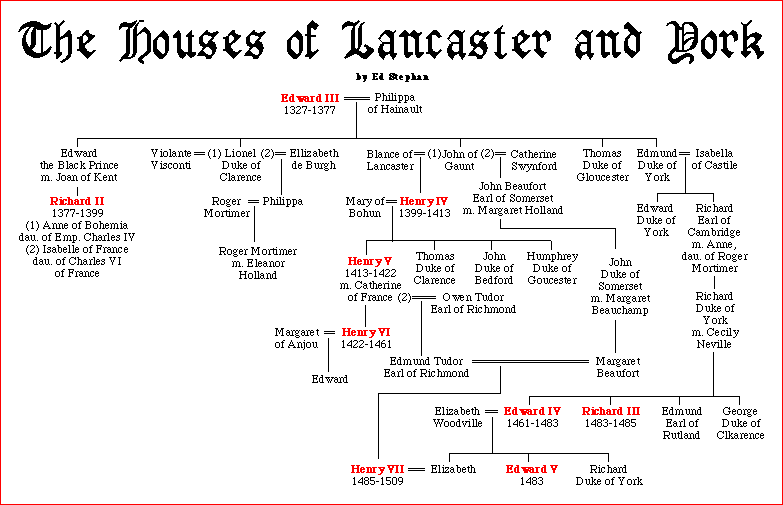
Click into this family tree for more resources on the War of the Roses between the Lancasters and the Yorks and how a Tudor got to be king!
Learning about how the Tudors got to the throne made me finally realize why Henry VIII was willing to do just about anything to get a legitimate male heir. After all that his ancestors went through to get that throne, he was pretty determined to keep it — and why Elizabeth I was just as determined to not let marriage undermine her authority.
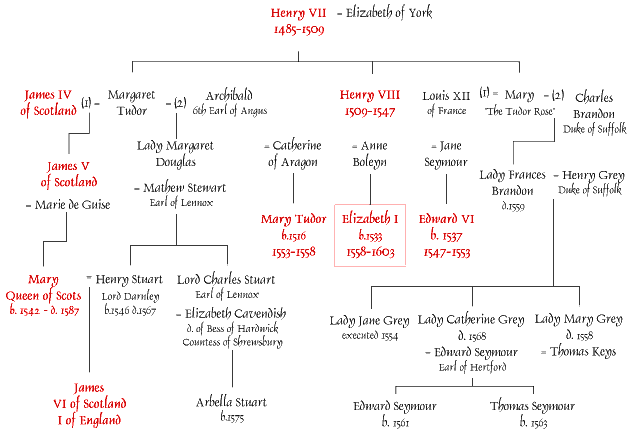
Click into this family tree to find out even more information about what happened to the Tudor line.
Enter current historical fiction and its magic. Most historical fiction being produced today is well-researched and written by fine writers who do a great job of creating compelling stories that are reasonably accurate. There are myriad resources available to the HF writer today; primary sources are collected and shared in great libraries and on the internet. The body of “domestic” documents (diaries, recipe books, household accounts written by women) that have been collected give the authors a much better view into their characters’ lives and it shows in the books they write. I read historical fiction with my internet browser at the ready so that I can either verify or expand on the material presented. It’s a good time to be a writer of historical fiction and an even better time to be a reader. There truly is magic in these books for the adventurous reader.
So what do I recommend? Let’s start with three female writers who are well-known for their work in historical fiction about this time period. I’ve read “quite a bit” of their work . 🙂
Phillipa Gregory is a well-regarded historian and author who has written many novels about the York/Lancaster/Tudor saga and her books are probably the most accessible of the three authors I have chosen for this post. Her web site has a nice feature with her books set against a historical timeline. Personally, if I were starting my reading today, I would follow her timeline and start with The White Queen, the story of Elizabeth Woodville. This book helps set the stage for the rivalries to follow. Next is The Kingmaker’s Daughters, which is followed by her newest and unreleased book about Elizabeth of York, who married Henry VII, thus starting the Tudor line. The Constant Princess depicts a fictionalized version of the life of Catherine of Aragon, Henry VIII’s first wife. The Other Boleyn Girl is loosely based on the life of Mary Boleyn, Anne’s sister, who was Henry VIII’s mistress and that relationship was one of the reasons used to declare the marriage between Anne and Henry null and void. The Other Boleyn Girl was also made into a movie starring Scarlett Johanssen. The Boleyn Inheritance covers the time period of Anne of Cleves and Katherine Howard, with Jane Boleyn finally getting consequences for her actions. The Queen’s Fool takes the reader into the problem of Mary Tudor, the forgotten heir to the Tudor throne. The Virgin’s Lover features Elizabeth I and Robert Dudley, and finally, The Other Queen is the story of Mary, Queen of Scots.
Hilary Mantel is the author of two highly-acclaimed novels about the Tudor Court, written from the perspective of Thomas Cromwell. Both Wolf Hall and Bring Up the Bodies have won the Man Booker Prize in England and are extraordinary extensions for people who already know something about Henry VIII and the political shenanigans that went on during his reign. The third book in the Cromwell trilogy is due to be published in 2015. I loved both of these books and am eagerly awaiting the third of the set.
Last but certainly not least is Alison Weir, also a renowned historian and novelist. She has written so many books about this period that I have just linked up the Alison Weir book list on amazon.com for you to look at. In checking out her online personna, I discovered that she actually leads British history tours. I AM INTRIGUED.
Although none of these ladies wrote a book about Henry’s last wife, Catherine Parr, there are a number of authors that have. I read one of them and was not impressed, but just in case, here’s a link that gives you some options.
More than you wanted to know? I hope not. After all, writers are readers and readers make better writers. I hope you will read some of these books and let me know how you liked them. Want to recommend something else? Go for it — I’m always ready for something new in this genre, and thanks for spending time with my great obsession today!
Travel Diary: Anne Boleyn and Hever Castle
Historical accuracy in the media means a lot to me; I’ve been a history nut for as long as I can remember. I love historical fiction, and as my profile says, I love visiting places where the history is palpable around me. Hever Castle in Kent, England, is just such a place. 
I’ve been watching The Tudors series on Netflix this summer, and its treatment of Anne Boleyn during the first season was less than historically accurate. Natalie Dormer was enchanting and heart-breaking in the tragic role of Anne Boleyn; in this article she discusses creating her character for The Tudors. As Natalie worked with the writers, her second-season Anne became more dimensional and more accurate. I have always been fascinated with Anne Boleyn and have eagerly awaited my opportunities to walk in her shoes (and I did walk in the ones that went to the Tower, if I may be a little irreverent about a very sad story).  When we planned our trip to southeast England, one of my first goals was to visit Hever Castle, Anne’s childhood home. Of course, we have to put that in the terms that a girl born c1501 would understand; she was shipped off in 1513 to learn how to be a courtier in the Netherlands, France, and eventually back in England. Her “childhood” was over at about age twelve and she became a skilled member of court, rarely returning to Hever. If you don’t know what happened to Anne Boleyn and her family, I suggest that you start by reading one of the many excellent historical fiction novels. My current favorites are by Hilary Mantel.
When we planned our trip to southeast England, one of my first goals was to visit Hever Castle, Anne’s childhood home. Of course, we have to put that in the terms that a girl born c1501 would understand; she was shipped off in 1513 to learn how to be a courtier in the Netherlands, France, and eventually back in England. Her “childhood” was over at about age twelve and she became a skilled member of court, rarely returning to Hever. If you don’t know what happened to Anne Boleyn and her family, I suggest that you start by reading one of the many excellent historical fiction novels. My current favorites are by Hilary Mantel.
When you enter Hever Castle’s park, you are greeted by a beautifully manicured topiary garden. Your first view of the castle is of its 13th Century gatehouse and walled bailey.  According to Hever Castle’s web site, “In the early 1500s the Bullen [Boleyn] family bought the castle and added a Tudor dwelling within the walls and so it became the childhood home of its most famous inhabitant, Anne Boleyn. It later passed into the ownership of Henry’s fourth wife, Anne of Cleves. From 1557 onwards the Castle was owned by a number of families including the Waldegraves, the Humfreys and the Meade Waldos. Finally, in 1903, William Waldorf Astor invested time, money and imagination in restoring the Castle, building the ‘Tudor Village’ and creating the gardens and lake.” That brings us to today’s Hever Castle and our visit there in 2011.
According to Hever Castle’s web site, “In the early 1500s the Bullen [Boleyn] family bought the castle and added a Tudor dwelling within the walls and so it became the childhood home of its most famous inhabitant, Anne Boleyn. It later passed into the ownership of Henry’s fourth wife, Anne of Cleves. From 1557 onwards the Castle was owned by a number of families including the Waldegraves, the Humfreys and the Meade Waldos. Finally, in 1903, William Waldorf Astor invested time, money and imagination in restoring the Castle, building the ‘Tudor Village’ and creating the gardens and lake.” That brings us to today’s Hever Castle and our visit there in 2011. 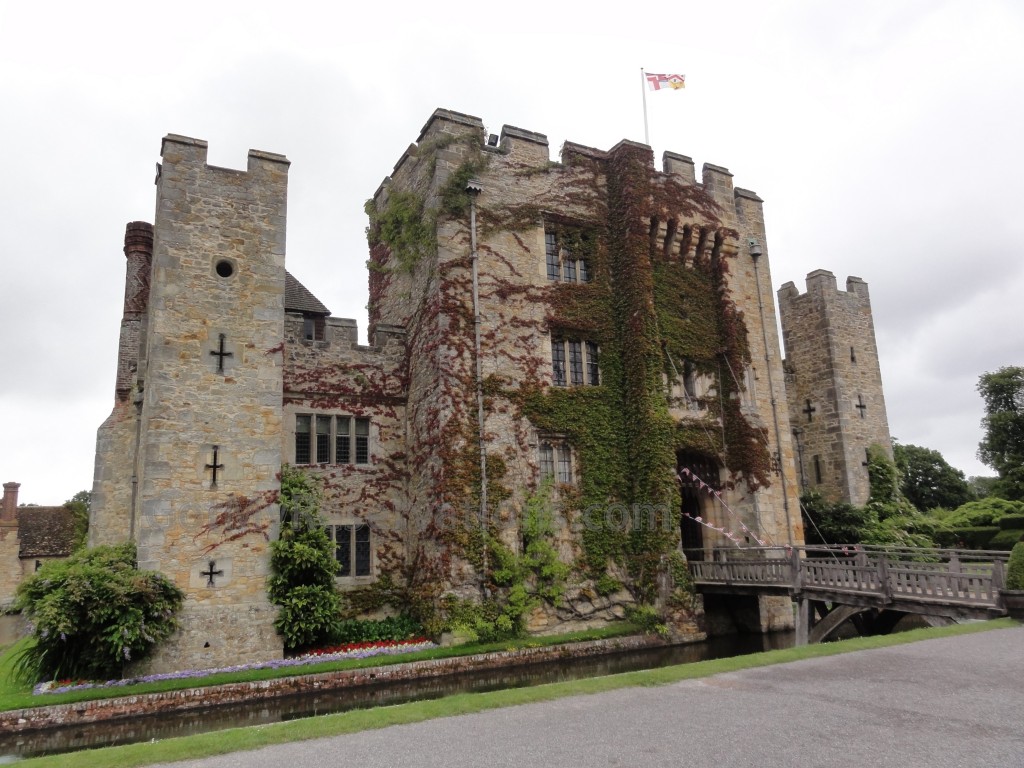 At the end of the topiary garden, you are welcomed across the drawbridge by interpreters. Dressed in period costumes, they help bring you back to the early 1500s. Once you enter the courtyard, you can see the Tudor wattle and daub structure that was built inside the stone bailey.
At the end of the topiary garden, you are welcomed across the drawbridge by interpreters. Dressed in period costumes, they help bring you back to the early 1500s. Once you enter the courtyard, you can see the Tudor wattle and daub structure that was built inside the stone bailey. 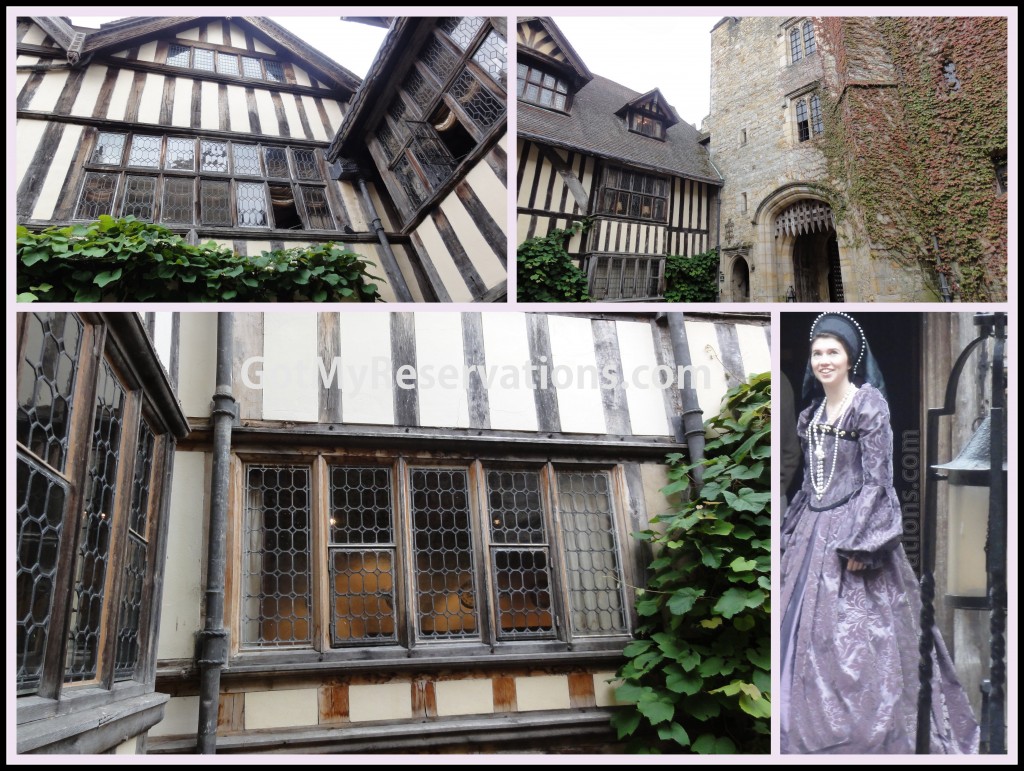 As it is with most old homes, they wouldn’t let me take interior photos, but much of the house is as it was restored by William Waldorf Astor. It is a comfortable and elegant early 20th century English manor home — except that it was the home of one of the richest men in the world. Every detail, every piece of paneling, every fireplace, and every window speaks of the people who previously inhabited this home and of Astor’s dream of bringing Hever back to life. I spent an hour in the museum area talking to the guide about Anne Boleyn’s artifacts, including the prayer book that she took to the Tower with her, which have been purchased at auction and are kept at Hever. I walked up the small spiral staircase that led to Anne’s childhood room; I truly walked in her footsteps.
As it is with most old homes, they wouldn’t let me take interior photos, but much of the house is as it was restored by William Waldorf Astor. It is a comfortable and elegant early 20th century English manor home — except that it was the home of one of the richest men in the world. Every detail, every piece of paneling, every fireplace, and every window speaks of the people who previously inhabited this home and of Astor’s dream of bringing Hever back to life. I spent an hour in the museum area talking to the guide about Anne Boleyn’s artifacts, including the prayer book that she took to the Tower with her, which have been purchased at auction and are kept at Hever. I walked up the small spiral staircase that led to Anne’s childhood room; I truly walked in her footsteps. 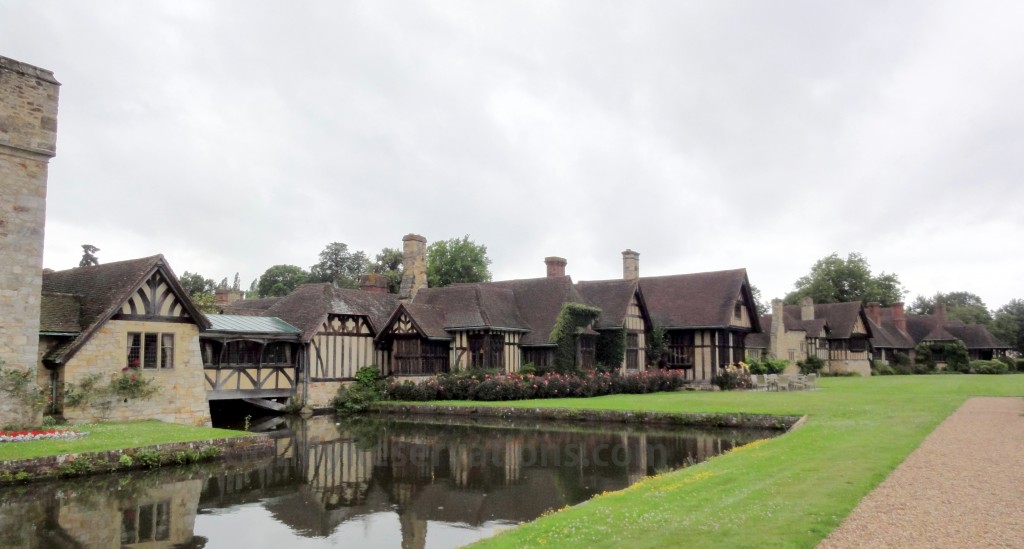 Astor used Hever Castle as a place to entertain friends and business contacts; he added on exact Tudor-style extensions to the original castle which are now used as a conference center and a bed and breakfast. Although we didn’t end up staying on the property, I would recommend it to any die-hard Tudor history buff.
Astor used Hever Castle as a place to entertain friends and business contacts; he added on exact Tudor-style extensions to the original castle which are now used as a conference center and a bed and breakfast. Although we didn’t end up staying on the property, I would recommend it to any die-hard Tudor history buff. 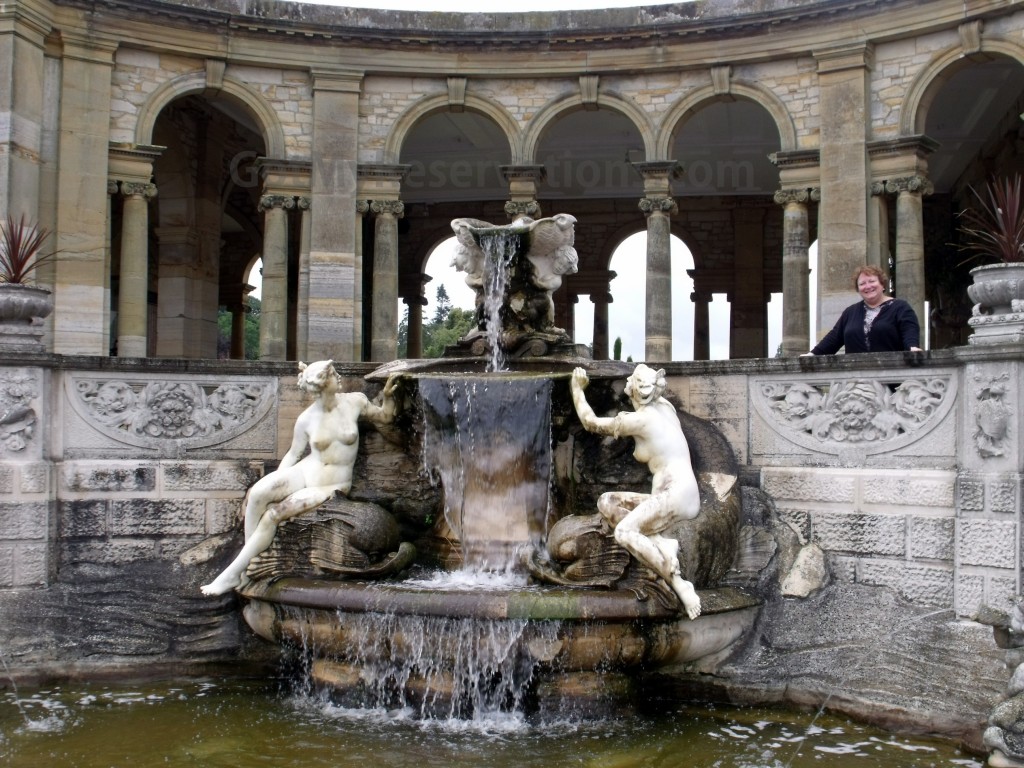 In addition to the new accommodation wings, Astor also built a large Italian-style garden in which to show off his collection of statuary. It was raining by the time we got to the garden, but it was well worth the inconvenience of walking around in the rain.
In addition to the new accommodation wings, Astor also built a large Italian-style garden in which to show off his collection of statuary. It was raining by the time we got to the garden, but it was well worth the inconvenience of walking around in the rain.
I’ve always thought that Anne has been misjudged and reviled because her story was engineered, written, and then told by men. It wasn’t HERstory, it was HIStory. Anne Boleyn’s life is a warning to guard the rights as modern women that many women before us have struggled to achieve. Recent events here in the United States show us that 500 years later, women can still be made second-class citizens by the swift stroke of a vote.
Anne’s role as a religious reformer also cannot be ignored. She and Henry had different goals when they broke away from the Catholic church. While the story of the birth of the Church of England is one that can be read in countless books, we were privileged to be at the Globe Theater for a rehearsal of Anne Boleyn, a play about Anne’s role in the Reformation.
Hever Castle is an easy drive in the countryside outside of London and I highly recommend visiting. As with most English castles turned tourist attractions, there is an informal restaurant and other things to do beyond soaking up the history; there is even a jousting tournament in the summer!
I’m linking up today with The Tablescaper for “Oh, The Places I’ve Been” and Budget Travelers Sandbox, so stop by and get some more inspiration for your travel bucket list!
I’ve also joined forces with Bloglovin’ and I hope that you will follow me — it’s really easy to import your Google Reader links if you need to, by the way. Follow my blog with Bloglovin.
A Visit to the Romance Hotel Rome
I am honored today to welcome a new guest blogger to the Got My Reservations family — my friend Debbie. Debbie and her husband are avid and intrepid travelers and have lots to share about the places they’ve seen. In this post, she introduces us to a small boutique hotel in Rome that you may want to put on your Rome Pinterest board, as I did.
We were in the mood for visiting Italy. The excuse we used was our niece was studying in Rome. However, do you really need an “excuse” to visit Italy? We don’t think so.
So, since the niece was in Rome, we had to spend some major time there. We (there were 4 of us – myself, husband, brother and Mom), decided a week in Rome would be nice. Then, take the train to Florence for 5 days. Now, when to go and where to stay?
We went to Italy in November, after high season, when rates are lower and tourists are fewer. In addition, we were able to schedule the trip so we left on a Wednesday afternoon arriving in Rome on Thursday morning, obtaining cheaper airfare and skipping a night in the hotel. We returned from Florence 12 days later, on a Monday. We were in Italy over the U.S. Thanksgiving holiday, meaning we only had to use 6 days of vacation time, always a consideration.
One of our main criteria in travel lodging is location. We want to be able to walk as much as possible to see the sights or be able to take public transportation. We are fine with a 3 star hotel – you will receive a clean, serviceable room with in-room bathroom, good location and service, and a decent breakfast for a reasonable price.
The hotel we found and enjoyed in Rome was the Romance Hotel Rome, located about 4 blocks from the Colosseum in a quiet, safe neighborhood with good restaurants and cafes. Breakfast was included, along with free Wi-Fi. The photos on their website looked good and it was “quaint”. The hotel has only 13 rooms. It was also close to a taxi stop, bus stop and the metro stop is by the Colosseum, so it “ticked all the boxes” we require.
The four of us arrived at the hotel at approximately 10AM. This was after driving around the hotel twice, as none of us saw the hotel entrance. The entrance is located at street level with minimal signage.
You enter through the gates and go directly downstairs to the reception area. The reception area is directly ahead and there is a sitting area off to the side which has a pc available to all guests.
The desk clerk was very kind and helped us to check in and stored our luggage, as the rooms were not ready. As we were waiting, they offered us drinks, so of course we had to have our first cappuccinos.
We are very “loose” travelers. We have a list of places we want to see, but no timing in particular (other than making sure we know which museums are closed on which days). After obtaining a local map from the clerk and talking with him, we decided on a walking tour of the neighborhood. We did our tour, had lunch and came back to check into the hotel around 4pm.
We went up to our rooms. This hotel is so small you must take the elevator if your room is not on the main floor. Don’t worry; there are stairs in case of an emergency, but they are not easy to access. The elevator is typical Italian – a cozy squeeze for the 4 of us. Good thing we are family!
The rooms are small, but then again, you are in the middle of Rome. We did upgrade our rooms, so we were on the back side of the hotel, rather than street side. This was a good idea, as it was warm and we had our windows open (there is no air conditioning after the end of October). The lighting was “OK’, but not great. It was rather typical for a hotel. The room had a sitting area and a bed area, each with a window. The rooms were pretty quiet, but you are in the middle of the city, which means the garbage trucks work during the night 😉
Breakfast was a selection of fresh fruit, pastries, cold cereals, cheeses and meats. And, of course, the wonderful selection of coffee drinks, made to order by the nice hostess who ran the breakfast room. The breakfast room is very tiny – in fact, some people took their breakfast and ate it in the sitting area near the reception area, in order to have a bit more room.
We liked the hotel and the staff was extremely knowledgeable and friendly, willing to help in any way. We would stay here again and recommend this hotel to anyone contemplating staying in Rome.
When not traveling, Debbie works as a glass artist in the Chicagoland northwest suburbs. You can see her beautiful work on her web site, Debbie Watson Glass.
Why I Always Take A Window Seat
It’s kind of a pain to sit in the window seat during an international flight.
There are pros and cons to having an aisle seat, the most important being that you don’t have to wake up your seatmate or crawl over someone to get up to use the necessary. The negative, of course, of the aisle seat is that one is constantly being bumped all night — by other passengers and by the well-meaning flight attendants.
The window seat, on the other hand, has a little more room. It also tends to be cold and unless you’ve got your pillow configuration just right, it can be difficult to actually sleep. And then there’s the noise of the engines…
But if I didn’t sit in the window seat during all these years of flying, I would have missed many beautiful sights. There’s something magical about looking out the window while landing and imagining the new place you are about to encounter. That was the case this year as I encountered Nice through the window of the airplane.
The perfectly manicured and planned neighborhood. The foothills coming practically up next to the water. The majestic mountains in the background. And to think I would have missed this if I had been sitting in the aisle seat.
Of course, I owe it all to my traveling partner of thirty-some years. He lets me have the window and I love him for it.
Sunset at JFK
Welcome back! Well, maybe you were already here, but I wasn’t.
We just returned from a two-week trip to France and I’ve been busy renegotiating life in the Windy City. Life does go on, doesn’t it, after one returns from a highly anticipated vacation?
I’ve been writing about our trip in detail on a vacation blog, France Frolic 2013, which is linked up in my sidebar. If you want all France, all the time, go there for the goods on our trip.
Meanwhile, over here on Got My Reservations, I’m going to be showcasing some photos from the trip that don’t really fit into the travelogue concept. This photo was taken with my point and shoot out the window as I saw our plane silhouetted against the fading sun.
As for me, it’s welcome to Reality 101 and I REALLY need to get to the gym!
New Bells for Notre Dame
Our friend Judy came back from her trip to France all agog about having seen these bells being manufactured for Notre Dame. The video is in French, but worth the view to see these beauties!
You can read about the bells in English here at the Paris Perfect Blog.
Since the new bells will be installed in time for Easter, I’ll be able to hear them on our trip to Paris in April. Yay!

